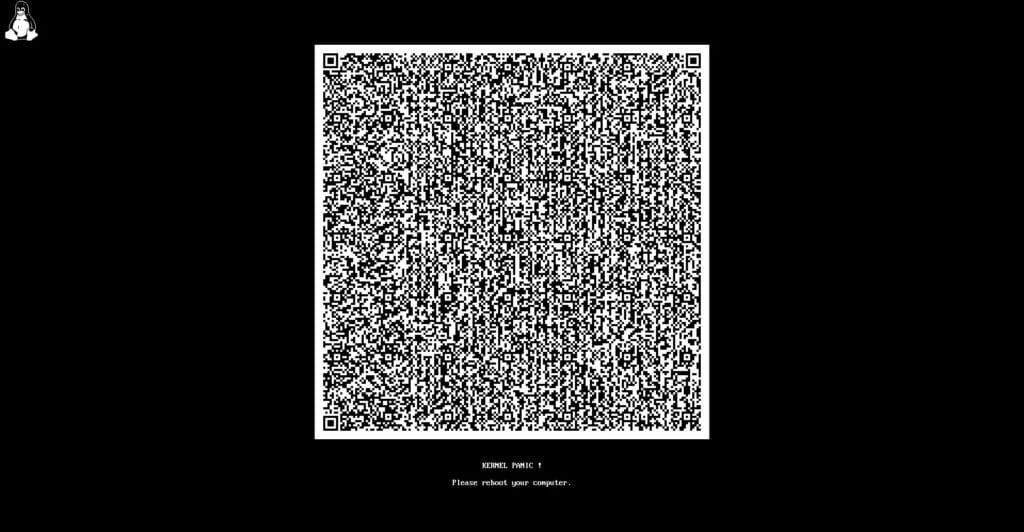The development of Linux 6.15 is progressing with significant improvements to DRM Panic, the Linux equivalent of Windows’ Blue Screen of Death. This system, which displays critical information when the kernel encounters a fatal error, is receiving key updates, including better QR code encoding based on the FIDO 2.2 specification and support for the VirtIO GPU driver in virtualized environments.
These changes have been submitted to the drm-misc-next repository, preparing for inclusion in Linux 6.15, with its merge window expected to open by the end of March.
Enhanced QR Encoding for DRM Panic
One of the most notable changes in Linux 6.15 is the update to QR code binary encoding in DRM Panic. Jocelyn Falempe, an engineer at Red Hat, explained that the current implementation converts 13 bits of input into 4 decimal digits, which are then efficiently encoded into the QR code format.
The new update adopts the FIDO 2.2 specification, which introduces a more efficient method: converting 7 bytes (56 bits) of input into 17 decimal digits. This eliminates the need to split input bytes into 13-bit chunks, improving efficiency and aligning the algorithm with a widely used standard.
This improvement, proposed by Jó Ágila Bitsch, also includes a minor but notable change: renaming the URL parameter from “zl=” to “z=”, ensuring backward compatibility if needed.
VirtIO GPU Support for Virtualized Environments
Another major enhancement in Linux 6.15 is the addition of VirtIO GPU DRM Panic support. VirtIO is a widely used standard in virtual machines for efficient virtual device management. With this improvement, virtualized environments can now display QR-coded error messages when critical kernel failures occur.
By adding support for VirtIO GPU, Linux expands DRM Panic compatibility to virtual machines, allowing structured error messages for easier debugging even in cloud and hypervisor-based environments.
Other DRM Enhancements and New Driver Support
In addition to the DRM Panic updates, the latest drm-misc-next pull request introduces new improvements in the Direct Rendering Manager (DRM) ecosystem:
- Support for Qualcomm QAIC Accelerator: The kernel now includes support for Qualcomm Cloud AI 200 (AIC200) accelerators, designed for AI workloads in cloud environments. While details about this hardware are still scarce, its inclusion in the upstream Linux kernel indicates its growing presence in AI computing.
- Matrox G220eH5 Support: The MGAG200 driver has been updated to support this new Matrox hardware, expanding Linux compatibility with additional Matrox graphics cards.
Linux 6.15 Continues to Improve Kernel Debugging
The ongoing development of DRM Panic reflects the Linux community’s commitment to enhancing error diagnosis and system recovery. By adopting more efficient QR encoding and expanding support to additional GPU drivers, the Linux kernel continues to improve its debugging tools, making it easier for developers and administrators to identify and address critical system failures.
As Linux 6.15 moves closer to release, more enhancements in DRM and other subsystems are expected, further solidifying Linux as the top choice for high-performance and mission-critical environments. 🚀
Fuente: Phoronix

